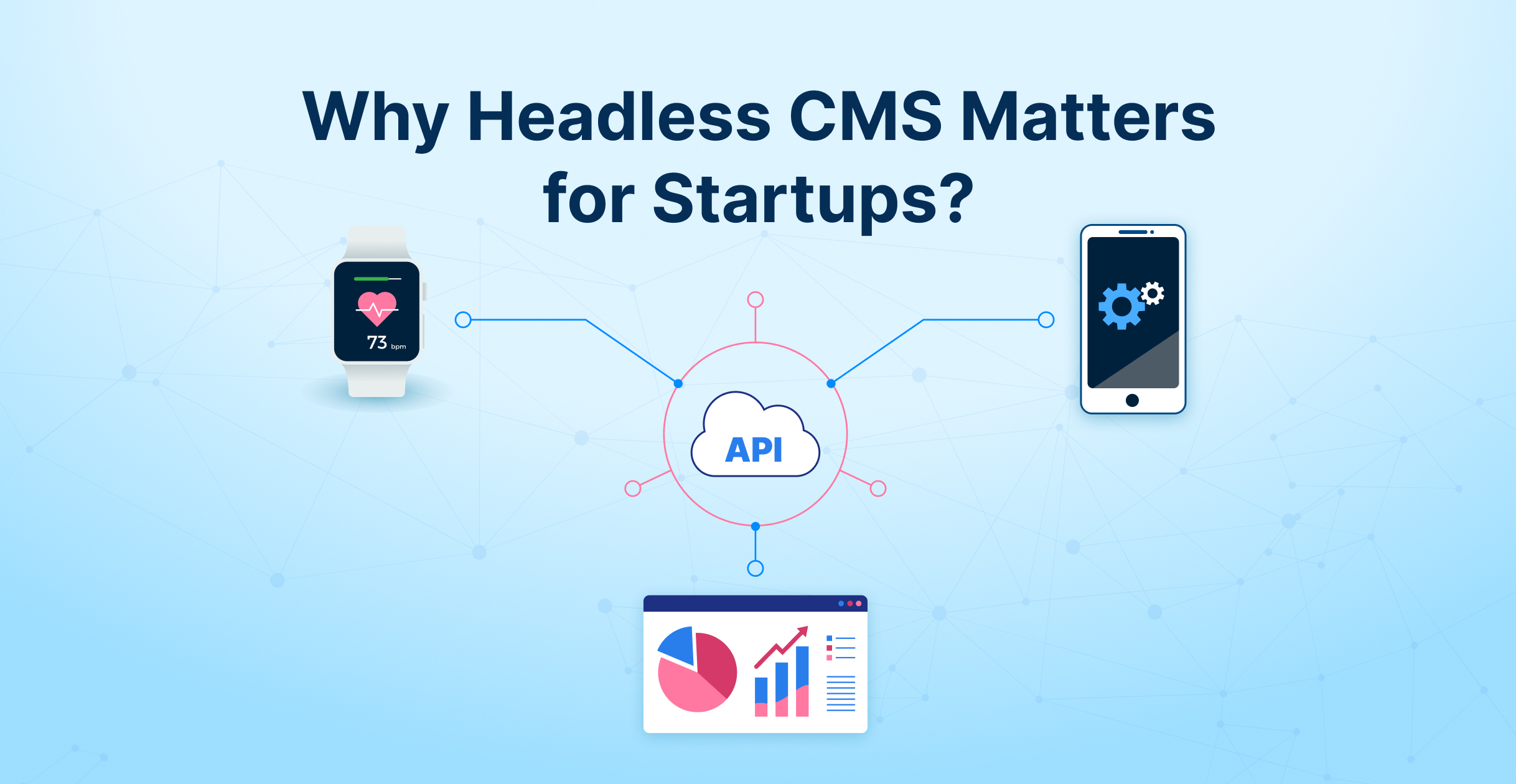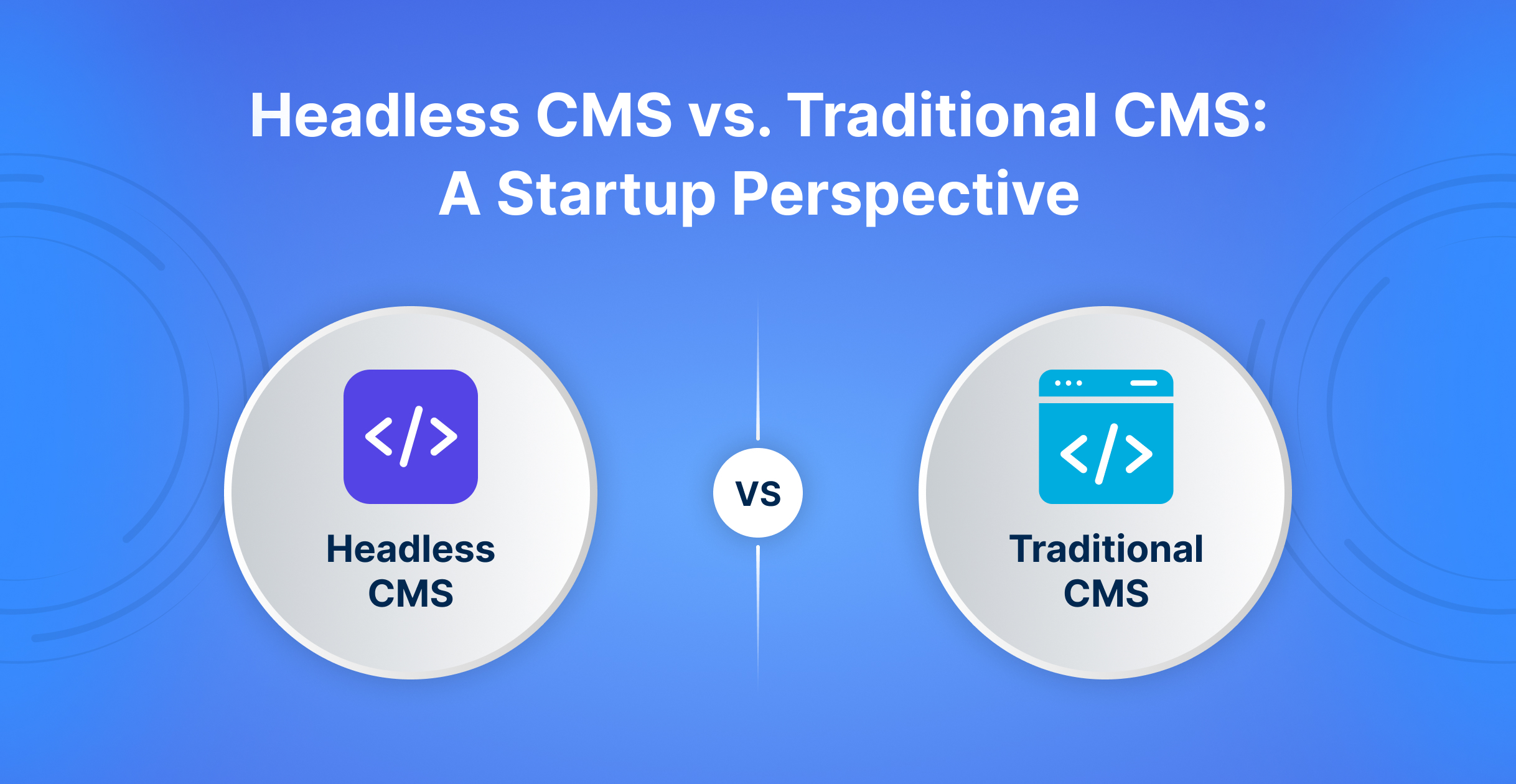Select Your Region
Region-Based Optimized Content
How to Choose the Right Headless CMS for Your Startup
Explore how startups can choose the right headless CMS by evaluating scalability, cost, developer tools, and AI integrations. Make smarter content decisions with our expert-backed guide.
For startups, selecting the right headless CMS is a strategic decision that can shape their digital presence, development timelines, and scalability. Unlike traditional CMS platforms, headless CMS solutions decouple content management from front-end delivery, enabling startups to deploy content across multiple channels with agility. However, the sheer variety of options and the unique demands of a growing business require a nuanced approach. This article dives into the critical factors startups must evaluate—prioritizing scalability, cost-efficiency, development speed, and integration capabilities—while offering actionable insights to avoid common pitfalls.
Why Headless CMS Matters for Startups
 Startups operate in a high-stakes environment where speed, flexibility, and resource optimization are non-negotiable. A headless CMS provides the infrastructure to manage content as a centralized API-driven source of truth, allowing teams to deliver content to websites, mobile apps, IoT devices, and more without duplicating effort. This architecture aligns perfectly with modern development practices like Jamstack and supports automation workflows, reducing technical debt and enabling rapid iterations.
Startups operate in a high-stakes environment where speed, flexibility, and resource optimization are non-negotiable. A headless CMS provides the infrastructure to manage content as a centralized API-driven source of truth, allowing teams to deliver content to websites, mobile apps, IoT devices, and more without duplicating effort. This architecture aligns perfectly with modern development practices like Jamstack and supports automation workflows, reducing technical debt and enabling rapid iterations.
For example, a fintech startup launching a multi-platform app can use a headless CMS to manage compliance-heavy content (like terms of service) in one place while rendering it across web, iOS, and Android. The separation of content and presentation also empowers designers and developers to use their preferred frameworks (React, Vue.js, Gatsby) without constraining content teams to predefined templates.
Key Factors to Evaluate in a Headless CMS
1. Scalability and Performance
Startups often experience unpredictable growth, making scalability a top priority. A headless CMS should handle traffic spikes, support global deployments, and offer performance optimizations like caching and CDN integration. Cloud-native platforms such as Contentful, Sanity, and Strapi excel in this area, but it’s essential to assess how each platform scales with your specific use case.
API Throughput: Can the CMS handle high-frequency API calls as your user base grows?
Global Delivery: Does it integrate with CDNs to reduce latency for international audiences?
Customization Limits: Are there restrictions on data models or content types that might block future expansion?
Example: A social media startup using a headless CMS with real-time API capabilities can dynamically serve user-generated content without compromising site performance.
2. Cost-Efficiency and Hidden Expenses
While headless CMSs typically use subscription-based pricing, costs can escalate quickly if teams underestimate licensing, storage, or API rate limits. Startups should compare total cost of ownership (TCO) across platforms, factoring in the need for developer hours, third-party tools, and potential customization.
Free Tiers: Platforms like Contentful and Prismic offer generous free tiers ideal for MVPs.
Pay-as-You-Go Models: Some CMSs, such as Storyblok, charge based on API usage, which suits variable workloads.
Hosting Costs: Self-hosted headless CMS options (e.g., Strapi) reduce licensing fees but increase operational overhead.
Pro Tip: Look for platforms with predictable pricing structures and no "gotchas" on API rate limits or storage. For example, a SaaS startup using Sanity could leverage its usage-based pricing to align costs with user growth.
3. Developer Velocity and Ecosystem
Speed of development is a lifeline for startups. A headless CMS with robust SDKs, pre-built templates, and seamless integration into CI/CD pipelines can save weeks of engineering time. Consider how well the platform supports your team’s stack (e.g., JavaScript, Python, .NET) and whether it offers tools for automation, such as webhooks or content versioning.
Framework Compatibility: Does it work natively with tools like Next.js, Nuxt, or Gatsby?
Extensibility: Are custom fields, webhooks, and plugins easy to implement?
Onboarding: How long does it take to set up and train your team?
Use Case: A developer at a healthtech startup might choose Prismic for its slice machine, which allows non-developers to create modular content components while accelerating front-end development with TypeScript support.
4. Content Workflow and Collaboration
As startups grow, their content teams often outpace their tools. Look for a CMS that supports role-based access, version control, and real-time collaboration. Features like content preview, scheduled publishing, and multilingual support can prevent bottlenecks in product launches or global expansions.
Key Question: Will your CMS empower content creators to work independently, or will they need engineering intervention for every update?
5. Integration with AI and Automation Tools
Modern startups are increasingly adopting AI agents for content generation, SEO optimization, and customer personalization. A headless CMS should support API-first integrations with AI platforms (e.g., OpenAI, Anthropic) and automation tools (e.g., Zapier, Make). For example, using a CMS with webhooks could automate updating a helpdesk (like Zendesk) when new documentation is published.
AI-Ready APIs: Can your CMS accept programmatic content input from generative AI?
Workflow Automation: Does it trigger actions (e.g., sending notifications, deploying updates) via integrations?
SEO Tools: Are metadata customization and multilingual SEO features built-in or easily addable?
6. Security and Compliance
Startups handling sensitive data (e.g., health, finance) must prioritize platforms with strong access controls, encryption, and audit trails. While most headless CMS providers offer baseline security, compliance with standards like SOC 2 or GDPR is non-negotiable for certain industries.
Real-World Need: A RegTech startup might require granular permissions and content versioning to meet regulatory reporting requirements.
A Framework for Decision-Making
Use this weighted matrix to compare options:
| Feature | Weight (1–5) | Sanity | Contentful | What It Means |
|---|---|---|---|---|
| Scalability | 5 | 4.5 | 3.8 | Sanity handles high traffic better; good for rapid growth. |
| Cost Predictability | 5 | 4.0 | 4.7 | Contentful offers more transparent and startup-friendly pricing. |
| Developer Tools | 4 | 4.8 | 3.5 | Sanity has better SDKs, APIs, and dev workflows. |
| AI Integration | 3 | 4.2 | 4.9 | Contentful is more AI-ready and supports automation tools more easily. |
| Collaboration Features | 3 | 3.7 | 4.5 | Contentful is better for content teams and workflow management. |
For instance, Sanity might score high in developer flexibility but lag in collaboration tools, while Contentful offers enterprise-grade workflows at a higher cost. Prioritize based on your startup’s stage and goals.
Headless CMS vs. Traditional CMS: A Startup Perspective
 Traditional CMS platforms (WordPress, Drupal) require significant infrastructure investment and lack the flexibility to serve mobile or voice-based channels. While they might appear cheaper upfront, the long-term costs of maintaining server environments and custom integrations can strain startup budgets.
Traditional CMS platforms (WordPress, Drupal) require significant infrastructure investment and lack the flexibility to serve mobile or voice-based channels. While they might appear cheaper upfront, the long-term costs of maintaining server environments and custom integrations can strain startup budgets.
Headless CMS advantages for startups include:
Elimination of server maintenance
Faster deployment across new channels
Better separation of concerns for developers and content teams
Native support for static site generators (SSGs) and Jamstack
However, these benefits come with trade-offs. Headless CMS platforms require API expertise, and their interfaces can feel less intuitive to non-technical users. The key is to balance these trade-offs with your team’s capabilities and product roadmap.
How a Series A Startup Picked the Right Headless CMS
Take Shopify-like e-commerce startup QuickCart, which needed a CMS to manage product descriptions, marketing pages, and international content. Their evaluation process included:
Defining Channels: Web, mobile app, and integration with third-party marketplaces.
Estimating Traffic: Projecting 10x growth within 12 months.
Assessing Developer Time: Prioritizing platforms with pre-built Commerce Layer integrations.
They selected Contentful for its enterprise scalability and commerce-specific templates, which cut 30% off their development time. By leveraging its webhooks, they automated content propagation to external marketplaces, ensuring consistency across 50+ sellers.
Hi, my name is Jaswinder, let's talk about your business needs.
I will do my best to find a reliable solution for you!
Common Pitfalls to Avoid
Overlooking Long-Term Lock-In: A CMS with vendor-specific APIs can become a bottleneck. Opt for open standards like GraphQL or REST where possible.
Underestimating Support Needs: Startups with small engineering teams should verify if the CMS offers 24/7 support (e.g., Hygraph) or rely on community forums.
Ignoring Content Modeling Complexity: Flexible data models are a double-edged sword. Ensure your team can maintain structured content without drift.
Frequently Asked Questions
Find answers to the most common questions about Choosing the Right Headless CMS for Startups
Yes. Platforms like Contentful and Strapi offer free tiers with sufficient features for early-stage development. For example, Contentful’s free plan allows 1 user, 500 entries, and 20,000 API calls monthly—ideal for validating a concept. However, ensure the free tier aligns with your projected growth timeline to avoid migration headaches later.
While traditional CMSs often have lower initial costs (e.g., free WordPress), they require server hosting, security maintenance, and custom integrations as your startup scales. A headless CMS, though pricier per API call, eliminates infrastructure management and accelerates multi-channel deployment. A 2023 comparison by Dev.to showed headless CMSs reduced time-to-market by 40% for startups with distributed teams.
Significant. Startups with minimal full-time engineering resources should prioritize CMSs with low- to no-code options, extensive documentation, and pre-built tools. For example, Sitecore Headless offers enterprise features but demands expert developers, whereas Notion as a CMS (with tools like Notion API) might suit no-code MVPs but lacks scalability for large datasets.
Most headless CMS platforms support custom APIs, enabling integration with AI tools like Copy.ai or Jasper. For example, a travel startup could automate blog content creation using an AI tool and then push the output to a Headless CMS via its API. Platforms like Sanity allow custom hooks to auto-generate metadata or images using AI models during content ingestion.
Absolutely, but compliance is non-negotiable. Platforms like Contentful and Prismic offer HIPAA- and GDPR-compliant configurations. A medtech startup using Sanity might leverage role-based access and version history to meet audit requirements, while ensuring all data is encrypted at rest and in transit.
News & Insights
We like to share our thoughts on topics we find inspiring. Explore our news and insights.
Choosing the Right API: A Practical Guide to 7 Essential API Types in 2025
Discover the 7 essential API types in 2025 and learn how to select the right one for your project. Understand REST, GraphQL, SOAP, gRPC, WebSockets, RPC, and Webhooks, their use cases, and benefits.
How Virtual Product Visualization Is Transforming Online Shopping Experiences
Virtual product visualization is reshaping online shopping by offering immersive 3D experiences, AR-based product placement, and virtual try-ons. It enhances user engagement, boosts buyer confidence, reduces return rates, and helps brands deliver personalized, interactive shopping journeys.